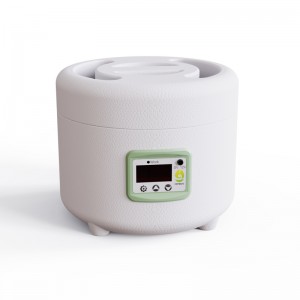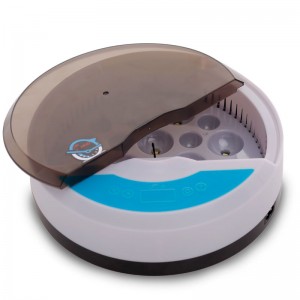Small automatic incubator for 9 duck eggs
Features
【Automatic temperature control&display】Accurate automatic temperature control and display.
【Multifunction egg tray】Adapt to various egg shape as required
【Washable base】Easy to clean
【3 in 1 combination】Setter,hatcher,brooder combined
Application
Smart 9 eggs incubator, old people and children can operate it easily. Six highlight feature for better hatching experience.
Automatic Temperature Control, Waterbed Incubation, Simple Operation
Dual power supply, Technical Guidance, Silent Incubation
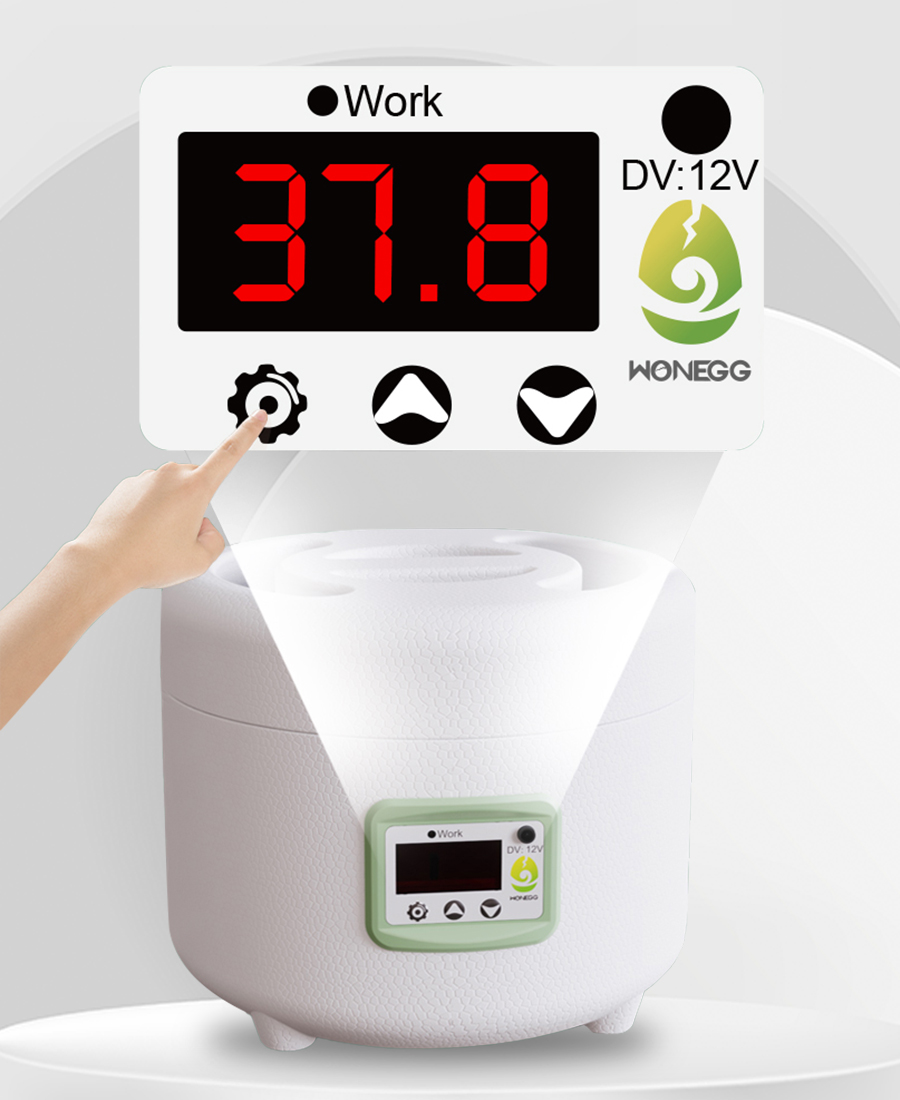
Products Parameters
| Brand |
WONEGG | Voltage |
110V/220V |
| Origin | China | Color | White |
| Model | Waterbed-9 |
Power | 8W |
| G.W. | 0.4KG | N.W. | 0.25KG |
More Details
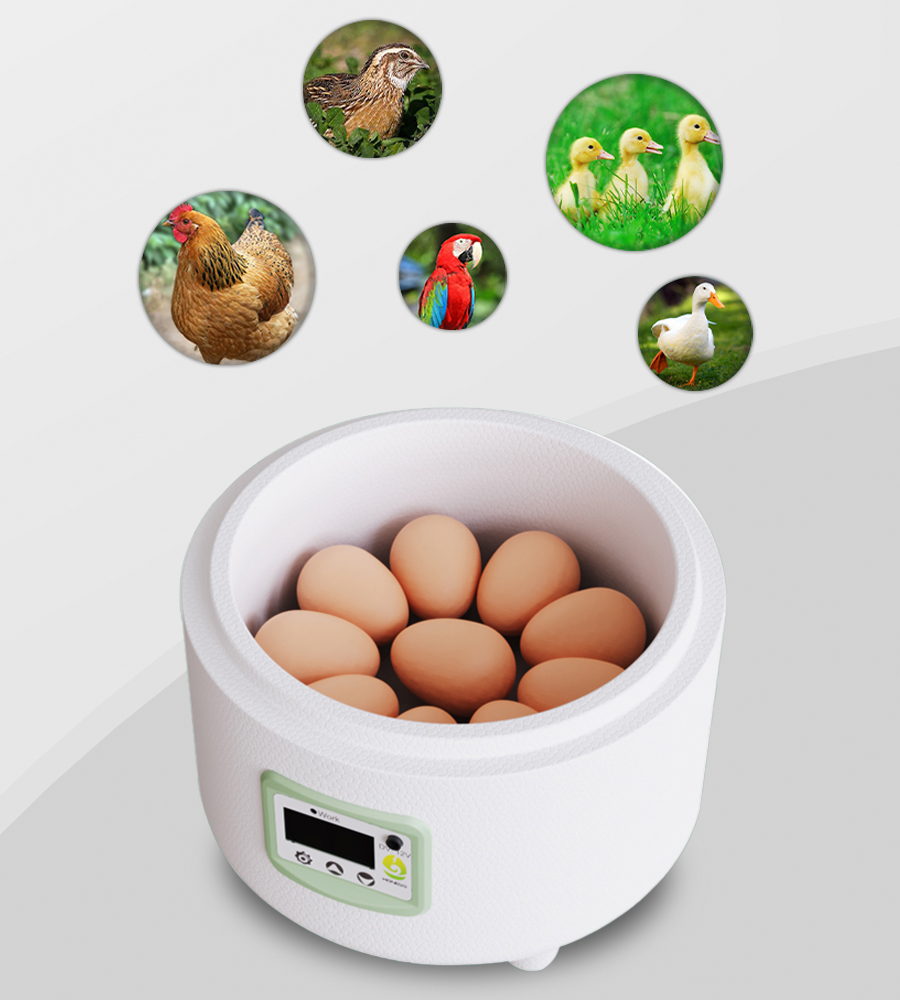
We have been experienced manufacturer for incubator. Welcome throughout the world buyers to speak to us for organization and long-term cooperation.
We welcome you to visit our company & factory and our showroom displays various products that will meet your expectations.
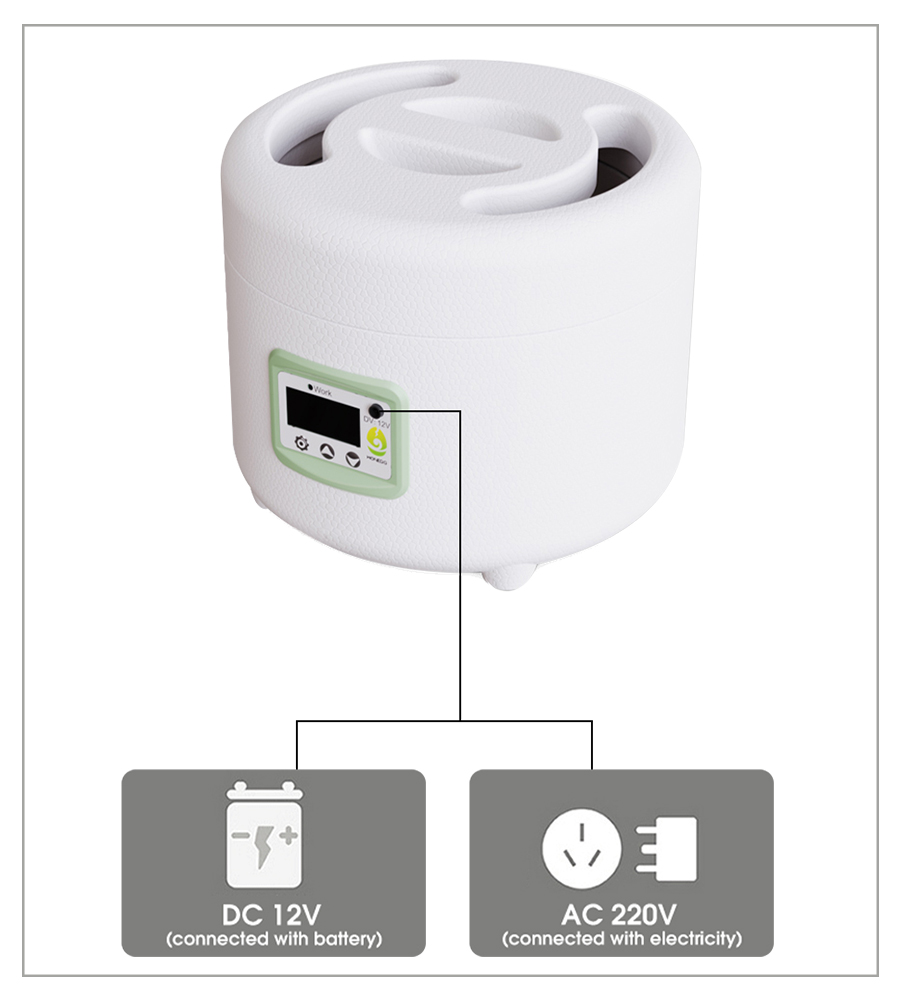
Some of you maybe worried about power failure during hatching and waste the precious eggs, waterbed 9 eggs incubator model can connecting 12V & 220V together.
Moreover, dual voltage incubator is designed with equipped transformer in PCB already,no need to purchase extra as other competitors.
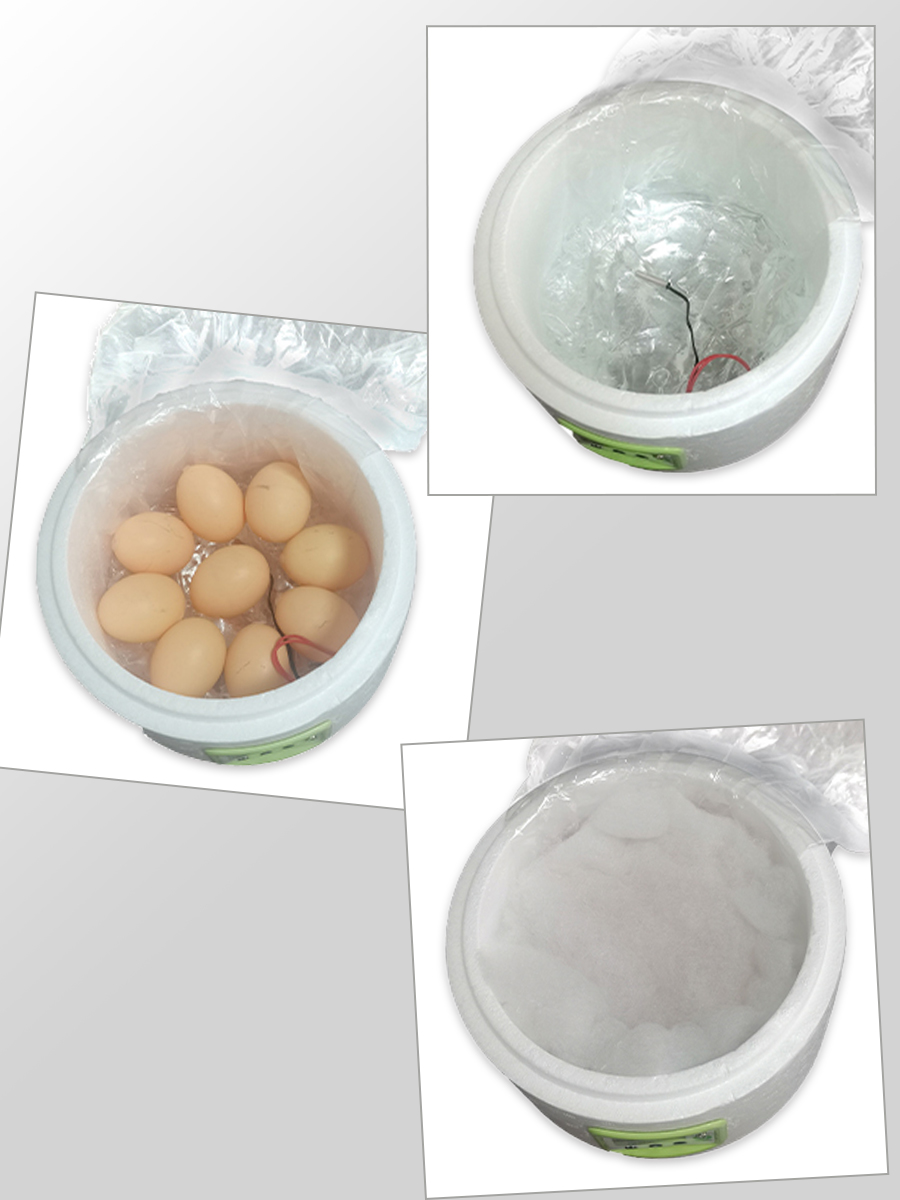
How to start the hatching when you have one waterbed incubator?
1. Install the water bag. Place heater flat on the bottom of the styrofoam.
2. Put in fertilized eggs. Add 34-38℃ warm water into water bag and place temperature sensor on the surface of water bag. Then put fertilized eggs in.
3. Cover with insulated cotton. Cover fertilized eggs with insulated cotton & styrofoam cover.
Exception handling during hatching
1. Power outage during incubation?
Answer: Raise the temperature of the incubator, wrap it with styrofoam or cover the incubator with a quilt, and heat the water in the water tray.
2. The machine stops working during the incubation process?
Answer: The machine should be replaced in time. If the machine is not replaced, the machine should be insulated (heating devices such as incandescent lamps are placed in the machine) until the machine is repaired.
3. How many fertilized eggs die on days 1-6?
Answer: The reasons are: the incubation temperature is too high or too low, the ventilation in the incubator is not good, the eggs are not turned, the eggs are re-steamed too much, the condition of the breeding birds is abnormal, the eggs are stored for too long, the storage conditions are improper, and genetic factors.
4. Embryo death in the second week of incubation
Answer: The reasons are: high storage temperature of breeding eggs, high or low temperature in the middle of incubation, infection of pathogenic microorganisms from maternal origin or from eggshells, poor ventilation in the incubator, malnutrition of breeders, vitamin deficiency, abnormal egg transfer , Power outage during incubation.
5. The young chicks are fully formed, retain a large amount of unabsorbed yolk, do not peck the shell, and die in 18--21 days
Answer: The reasons are: the humidity of the incubator is too low, the humidity in the hatching period is too high or low, the incubation temperature is improper, the ventilation is poor, the temperature in the hatching period is too high, and the embryos are infected.
6. The shell is pecked, and the chicks are unable to expand the peck hole
Answer: The reasons are: too low humidity during hatching, poor ventilation during hatching, short-term over-temperature, low temperature, and infection of embryos.
7. The pecking stops midway, some young chicks die, and some are still alive
Answer: The reasons are: low humidity during hatching, poor ventilation during hatching, and excessive temperature in a short period of time.
8. chicks and shell membrane adhesion
Answer: The moisture of the hatching eggs evaporates too much, the humidity during the hatching period is too low, and the egg turning is not normal.
9. The hatching time is delayed for a long time
Answer: Improper storage of breeding eggs, large eggs and small eggs, fresh eggs and old eggs are mixed together for incubation, the temperature is maintained at the maximum temperature limit and the minimum temperature limit for too long during the incubation process, and the ventilation is poor.
10. Eggs burst before and after 12-13 days of incubation
Answer: The eggshell is dirty, the eggshell is not cleaned, bacteria invades the egg, and the egg is infected in the incubator.
11. Embryo hatching is difficult
Answer: If it is difficult for the embryo to emerge from the shell, it should be artificially assisted. During the midwifery, the egg shell should be gently peeled off to protect the blood vessels. If it is too dry, it can be moistened with warm water before peeling off. Once the head and neck of the embryo are exposed, it is estimated that it can break free on its own. When the shell comes out, the midwifery can be stopped, and the egg shell must not be forcibly peeled off.
12. Humidification precautions and humidification skills:
a. The machine is equipped with a humidifying water tank at the bottom of the box, and some boxes have water injection holes under the side walls.
b. Pay attention to the humidity reading and fill the water channel when needed. (usually every 4 days - once)
c. When the set humidity cannot be achieved after working for a long time, it means that the humidification effect of the machine is not ideal, and the ambient temperature is too low, the user should check
Whether the upper cover of the machine is properly covered, and whether the casing is cracked or damaged.
d. In order to enhance the humidification effect of the machine, if the above conditions are excluded, the water in the water tank can be replaced with warm water, or an auxiliary such as a sponge or a sponge that can increase the water volatilization surface can be added to the water tank to assist the volatilization of water.


